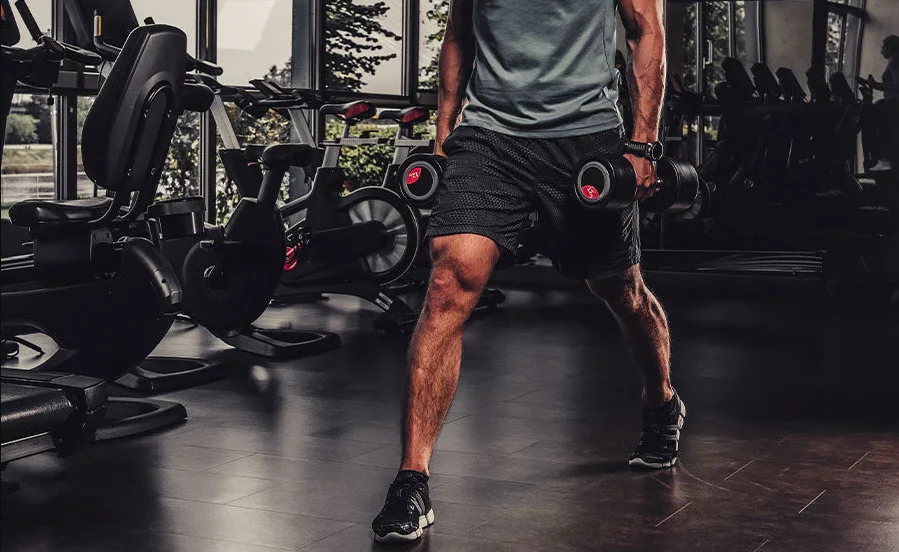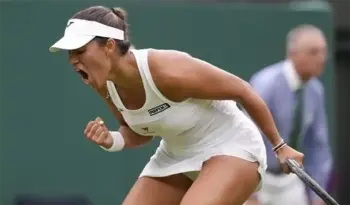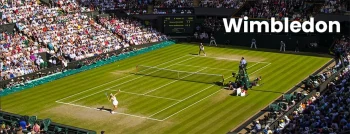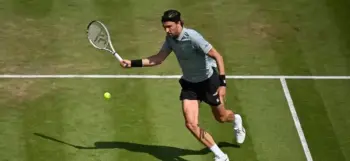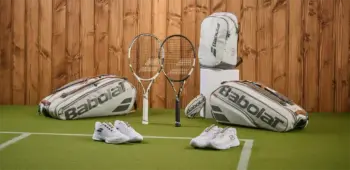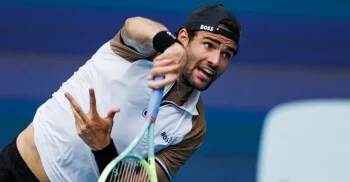When looking at tennis players fitness training, we usually do not expect them to lift heavy weights or spend great amounts of time in the gym. However, as tennis is a sport of explosive movements and a lot of stress on the body, all tennis players will have to go through a good amount of strength training.
There are a few body parts that will especially profit from a routine of weight training and I want to give you a few exercises and ideas for these! Please note that these are foundational movements and might not be super new, but those should never be overlooked.
Leg strength – the king of foundations
No surprise – but leg strength will be key for a lot of movements in tennis. We have all seen injured players suddenly not serving fast, even though their arms and shoulders seem to be fine. Almost every shot in tennis includes an explosive generation of power from the legs and core onto the ball, so it only makes sense to build great legs.
Balanced leg strength will also help with stability and resilience in your lower body, which will help prevent injuries and play better tennis for longer. The main muscle groups you want to build are your glutes, quads (front upper leg), hamstrings (back upper leg) and calves (back lower leg). Some of the main exercises for these muscle groups will include secondary targets, such as inner or outer thighs, but I would also suggest including accessory work for those.
Glutes & quads
For your glutes and quads there are two main exercises – the squat and the lunge – which will give you the best effects and secondary targets. Of course, there are things like leg extensions or other fancy machines, but functional exercises still remain the best, as they require your body to work harder and coordinate internally. Start with basic air squats if you are new and work your way through a classic progression: air squat, box squats, goblet squats, back squats. I
f you need some input first, the guy in the video here has a ton of great content available at Squat University
The lunge compliments the squats perfectly, as it forces your body to rather work single-legged and will also help with balance. You can start easy with regular lunges and then work your way towards a weighted version (e.g. dumbbells at your side), lateral lunges or version with one of your feet elevated. A special lunge/squat variation that gives a great training to your glutes and legs is the Bulgarian Split Squat (Video: How To Bulgarian Split Squat) – but make sure to start light, this exercise will make you feel the effect easily!
Hamstrings & lower back
Your hamstrings and lower back are part of the often quoted “posterior chain”, which supports your back and is vital to a lot of movements. The most common exercise to train this is a classic deadlift, but the regular version from the floor is overwhelming for a lot of athletes’ mobility and can lead to injury easily. Therefor I would suggest that you start with variations such as Romanian Deadlifts with dumbbells (Video: Dumbbell Romanian Deadlift), where you only go as far in the range of motion as you can keep your back straight and controlled.
You can also go for single leg options here as you progress with your training. The other great exercise for your back legs is the Good Morning, which can be performed with a rubber band first and then you can add light weights. Both these will build a back leg strength to compliment the just built squat ability.
Try the Members Tennis Fitness program!
Calves
Calves are a curious case, as some people don’t seem to grow them, and others just magically seem to have calves (look at Karatsev). The main way to build those for us explosive tennis players is through jumping, running and other plyometric exercises. But if you want to build the foundation here, then nothing beats a weighted calf raise where you hold onto a rack or wall and raise onto your toes with some weight at hand. You could also elevate your toes as you progress, to further largen your range of motion and improve your strength further.
Accessory work for legs
One muscle that often gets overlooked is the tibialis that runs next to your shin on your front lower leg. It hardly gets targeted in training, but often flares up in run-intensive athletes with problems like shin splints or inflammation. That is why I would recommend to throw in tibialis raises either with bodyweight or with weights (Video: Tibialis Raises – Do these to Walk Better, Run Faster, and Jump Higher).
Another area to target is your adductors and abductors in your thighs, which basically are there to splitting or bringing your legs together. You can train those pretty easily by either using a rubber band or pulley attached to your ankle and lift your leg out- and inside. Another idea would be to add a mini-band around your knees and to consciously push out your knees during air squats. Well trained inner and outer thighs can massively help with performance and injury prevention.
Sample leg day for tennis players
With these in mind, this is what a sample day for tennis players could look like:
- 4 sets x 6-8 repetitions of weighted squats (2x-3x reps for air squats in beginners)
- 3 sets total of:
8-10 repetitions of weighted lunges per leg
Rest 60 seconds
6-8 repetitions of dumbbell Romanian deadlifts
Rest 2 minutes - 3 sets total of:
10 banded good mornings (slow and deliberate)
Rest 30 seconds
6-8 repetitions per leg of calf raises
Rest 30 seconds
20 bodyweight tibialis raises
Rest as needed between sets
